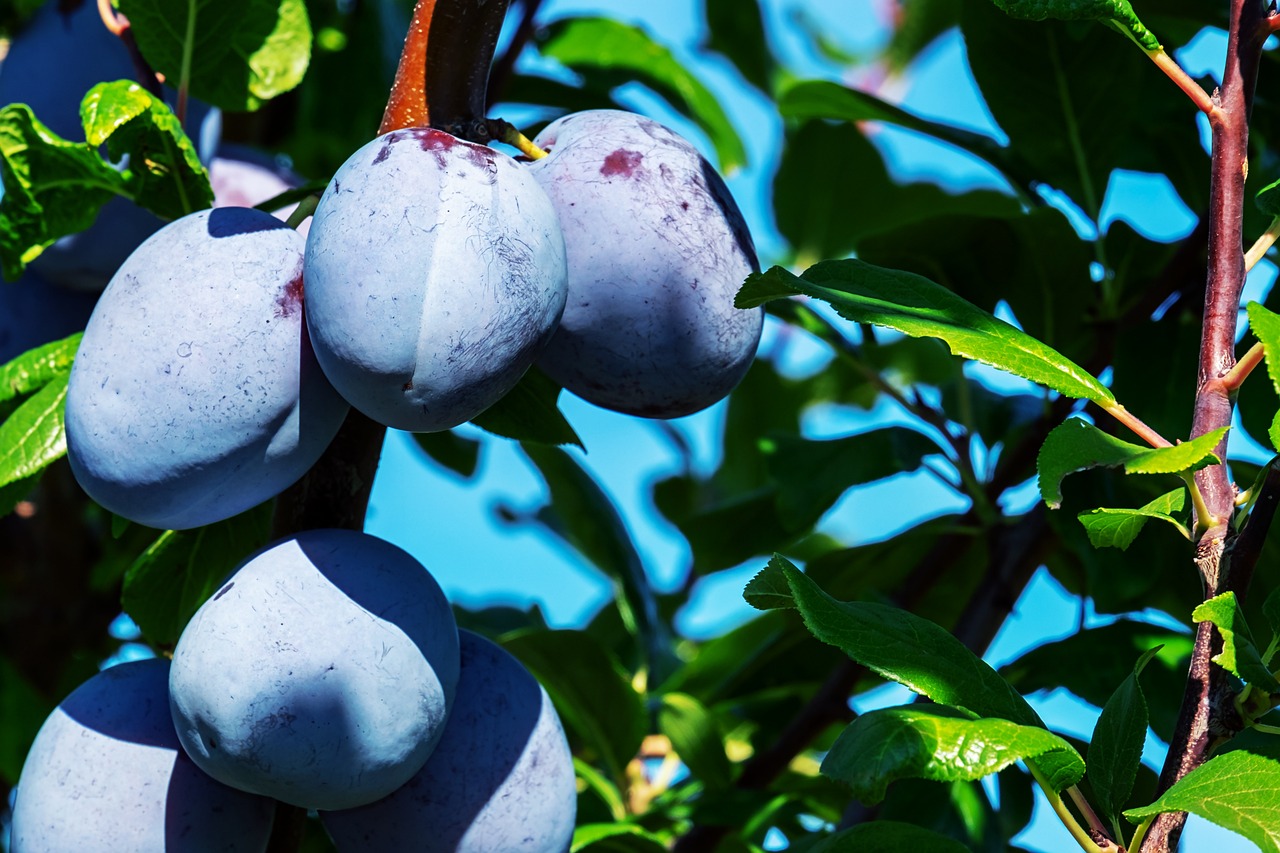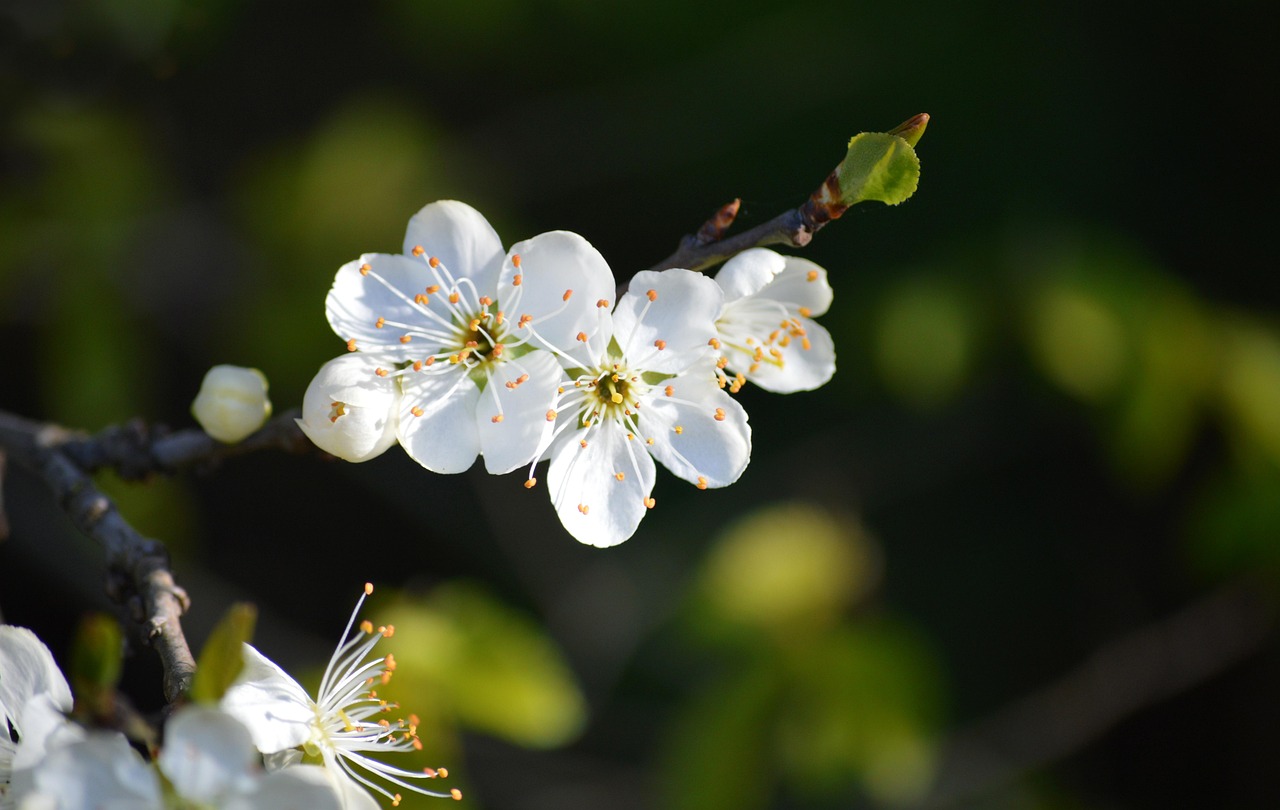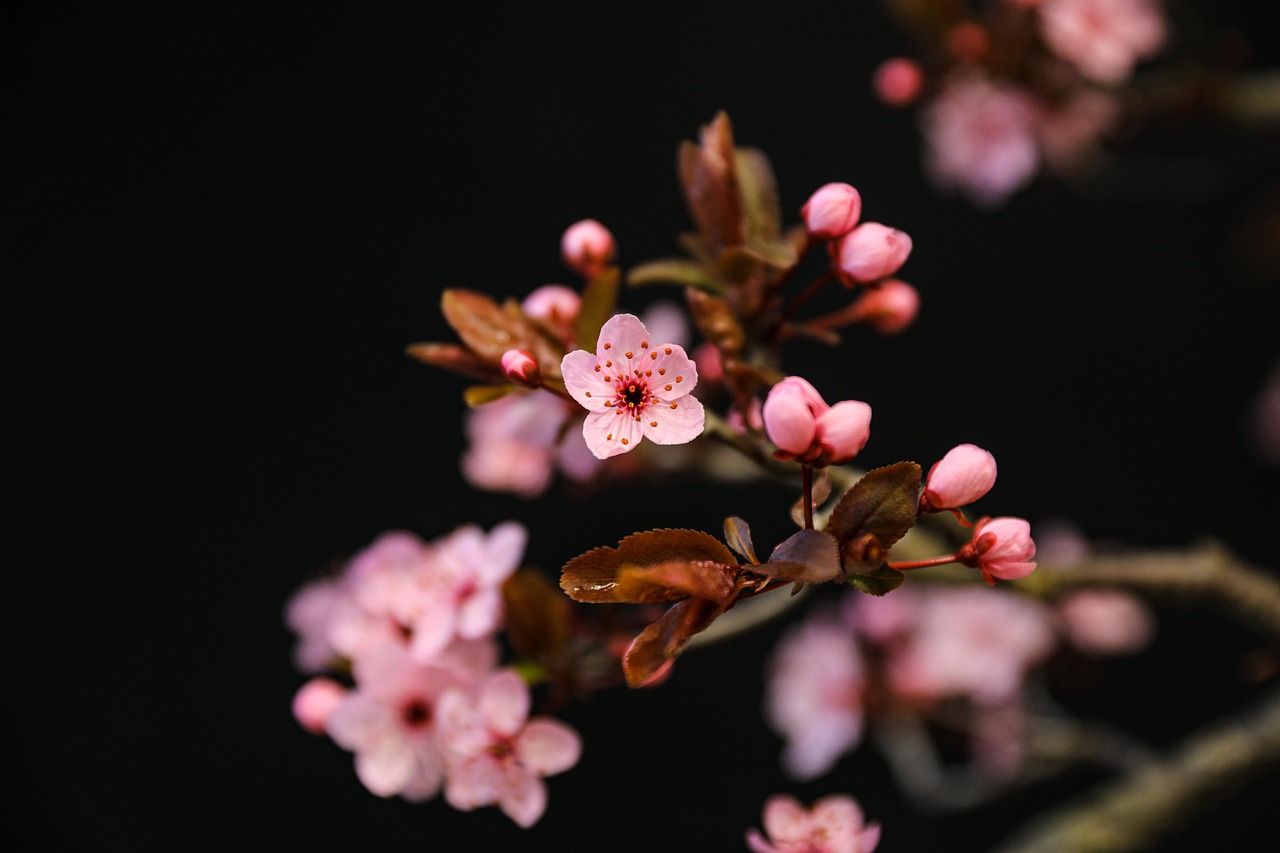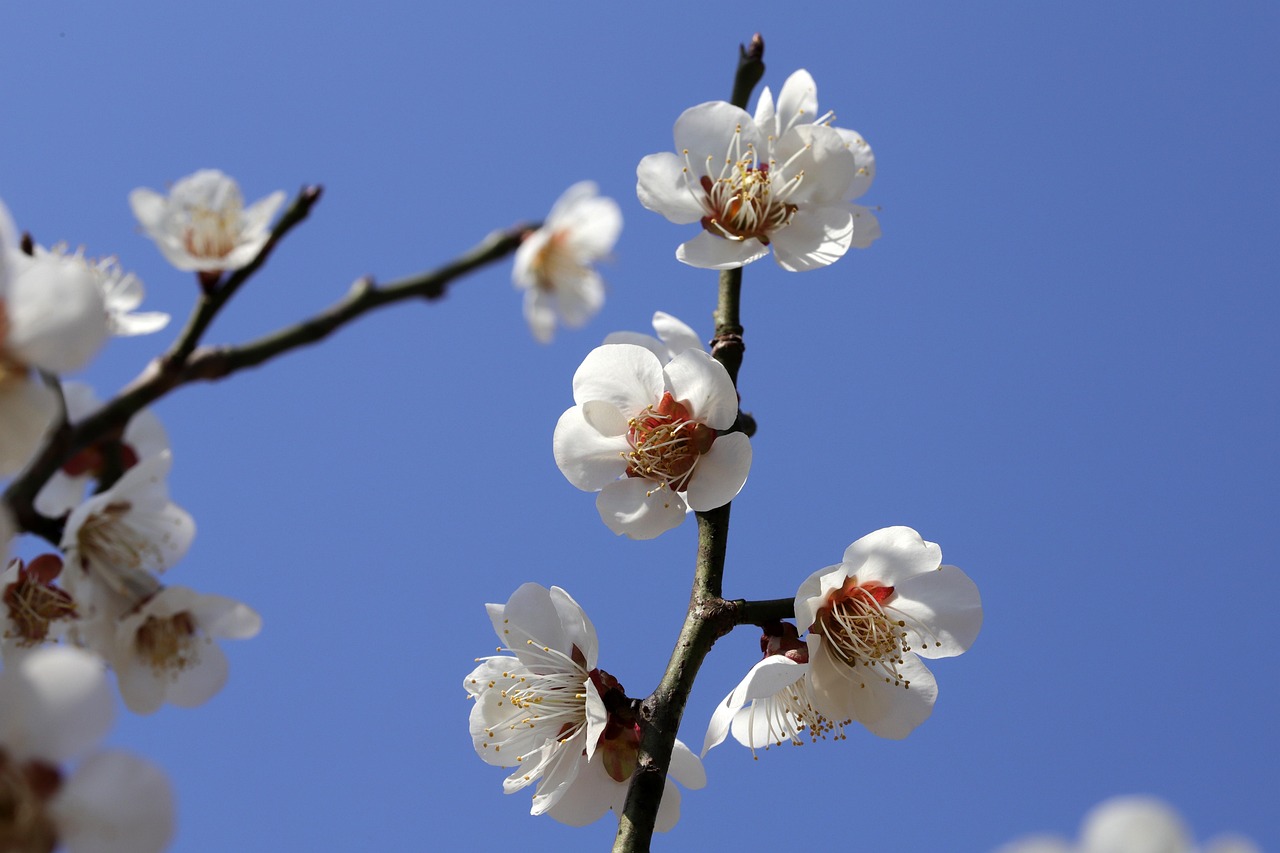Victoria plum trees typically exhibit moderate growth rates, averaging about 12 to 24 inches per year under optimal conditions. Factors such as soil quality, water availability, and sunlight exposure can influence growth. For best results in home fruit gardens, ensure proper care, including regular pruning and fertilization, to encourage healthy development and fruit production.
The Victoria plum tree typically grows at a moderate rate, achieving about 12 to 24 inches per year under optimal conditions. This growth rate allows it to produce fruit within three to five years after planting.
Understanding Victoria Plum Trees
Victoria plum trees are a popular choice for home fruit gardens due to their delicious, sweet fruit and beautiful blossoms. These trees are known for their high-quality plums, which are perfect for eating fresh or using in jams and desserts. The Victoria variety is particularly favored because of its reliable fruiting and adaptability to various climates.

When considering planting a Victoria plum tree, understanding its growth rate is essential. Factors such as soil quality, climate, and care practices can significantly influence how quickly the tree grows. Knowing these factors helps gardeners make informed decisions about planting and maintenance.
Growth Rate Factors
The growth rate of a Victoria plum tree can vary based on several key factors:
- Soil Quality: Well-drained, fertile soil promotes healthy growth. Poor soil can stunt growth and affect fruit production.
- Climate: Victoria plum trees thrive in temperate climates. They require a certain number of chill hours in winter for optimal fruiting.
- Watering: Regular watering during the growing season is crucial. However, overwatering can lead to root rot.
- Sunlight: Full sun exposure is ideal for these trees. They need at least six hours of sunlight daily to grow well.
- Pruning: Correct pruning techniques enhance air circulation and light penetration, promoting better growth and fruiting.
Growth Timeline
Understanding the growth timeline of the Victoria plum tree can help gardeners set expectations for their home orchards. Below is a general timeline of growth stages:

| Age | Growth Stage | Height Growth | Fruit Production |
|---|---|---|---|
| 1 Year | Establishment | 12-24 inches | No fruit |
| 2 Years | Early Growth | 12-24 inches | No fruit |
| 3 Years | Mature Growth | Up to 36 inches | Possibly a few fruits |
| 4 Years | Fruit Bearing | 12-24 inches | First significant crop |
| 5 Years+ | Established Tree | 12-24 inches annually | Regular annual crops |
This timeline provides a rough estimate for homeowners looking to cultivate their own Victoria plum trees. Each stage is vital for the overall health and productivity of the tree.
Caring for Your Victoria Plum Tree
Caring for a Victoria plum tree involves attention to several critical areas. Proper care can enhance growth rates and fruit production. Here are some essential care tips:
- Fertilization: Use a balanced fertilizer in early spring to support growth.
- Pest Control: Monitor for common pests such as aphids or fruit flies. Implement control measures when necessary.
- Disease Management: Keep an eye out for signs of diseases like brown rot, and take steps to manage them early.
- Mulching: Apply mulch around the base of the tree to retain moisture and suppress weeds.
By following these care guidelines, gardeners can ensure that their Victoria plum trees grow strong and healthy, ultimately leading to a bountiful harvest. Understanding the specific needs of this variety will help maximize its potential in home gardens.

Choosing the Right Location for Your Victoria Plum Tree
The location where you plant your Victoria plum tree plays a vital role in its growth and fruit production. A well-chosen spot can enhance growth rates and ensure the tree thrives. Here are some key considerations when selecting the perfect location:
- Sunlight: Victoria plum trees need full sun for optimal growth. Aim for a location that receives at least six to eight hours of direct sunlight each day.
- Space: Ensure there is enough space for the tree to grow. Victoria plum trees can reach heights of 15 to 20 feet and spread about 10 to 15 feet wide.
- Soil Drainage: Choose a spot with well-draining soil. Poor drainage can lead to root rot and other issues.
- Protection from Wind: Select a location that offers some protection from strong winds, which can damage branches and fruit.
Soil Preparation for Victoria Plum Trees
Proper soil preparation is essential for the healthy growth of your Victoria plum tree. The right soil conditions can significantly influence its development and fruit yield. Here are steps to prepare the soil before planting:
- Testing the Soil: Conduct a soil test to determine pH and nutrient levels. Victoria plum trees prefer slightly acidic to neutral soil, ideally between pH 6.0 and 7.0.
- Improving Soil Quality: Based on test results, amend the soil with organic matter or fertilizers as needed. Adding compost can improve soil structure and fertility.
- Tilling: Loosen the soil to a depth of at least 12 inches. This encourages root penetration and helps with drainage.
- Drainage Considerations: If your location has heavy clay soil, consider creating raised beds or planting in mounds to improve drainage.
Planting Your Victoria Plum Tree
Once you have prepared the site, it is time to plant your Victoria plum tree. Proper planting techniques are crucial for establishing a healthy tree.

- Selecting a Healthy Tree: Choose a healthy young tree from a reputable nursery. Look for one with a straight trunk and well-developed roots.
- Digging the Hole: Dig a hole that is twice as wide as the root ball and just as deep. This allows roots to spread easily.
- Positioning the Tree: Place the tree in the hole, ensuring that the graft union (swelling on the trunk) is above ground level.
- Backfilling: Fill the hole with soil, gently tamping it down to eliminate air pockets. Water thoroughly after planting.
Watering Your Victoria Plum Tree
Watering is another crucial aspect of caring for your Victoria plum tree, especially during its early years. Proper watering practices will promote healthy growth and fruit production.
- Establishment Phase: For the first year, water regularly to help establish roots. Aim for deep watering once a week, especially during dry spells.
- Drought Management: During dry periods, increase watering frequency. Monitor the soil moisture; it should be moist but not soggy.
- Mulching Benefits: Apply a layer of organic mulch around the base of the tree. Mulch helps retain moisture and regulates soil temperature.
Pest and Disease Awareness
Pest and disease management is crucial for maintaining a healthy Victoria plum tree. Being proactive can prevent potential problems that could hinder growth and fruit production.
| Pest/Disease | Symptoms | Treatment/Management |
|---|---|---|
| Aphids | Sooty mold on leaves; distorted new growth. | Use insecticidal soap or introduce beneficial insects like ladybugs. |
| Brown Rot | Wilting flowers; brown, mushy fruit. | Remove affected fruit; practice good sanitation in the garden. |
| Plum Curculio | Dimpling on fruit; worm holes in ripe fruit. | Use traps or insecticides as needed; ensure proper timing is followed. |
By staying vigilant and addressing these issues promptly, you can help ensure that your Victoria plum tree remains healthy and productive throughout its life cycle.
Harvesting Victoria Plums
Harvesting is a critical time for any gardener. Knowing when and how to harvest Victoria plums can significantly affect the quality of the fruit. Timing is essential, as plums do not continue to ripen significantly once picked.
When to Harvest
Victoria plums typically reach maturity in late summer to early fall, depending on the climate. Here are some indicators that your plums are ready for harvest:
- Color Change: The skin of the plums will change from green to a rich purple hue when ripe.
- Softness: Gently squeeze the fruit. Ripe plums should have a slight give when pressed.
- Aroma: A sweet, fruity aroma should be noticeable when the fruit is ripe.
- Separation: Ripe plums will easily detach from the tree with a gentle twist.
How to Harvest
Proper harvesting techniques help ensure that plums remain intact and flavorful. Here are some recommended steps:
- Use Clean Tools: If using pruners, ensure they are clean to prevent disease transfer.
- Gently Twist: Hold the plum firmly but gently twist it to detach it from the branch.
- Avoid Bruising: Place harvested plums in a basket or container lined with cloth to prevent bruising.
- Inspect for Damage: Check each plum for signs of damage or disease before storing them.
Storing Victoria Plums
After harvesting your Victoria plums, proper storage can help maintain their quality and extend shelf life. Here are some tips for storing plums effectively:
- Cool Temperature: Store plums in a cool, dry place. Refrigeration can extend freshness but may alter texture.
- Separate from Other Fruits: Keep plums away from ethylene-producing fruits like bananas and apples, which can speed up ripening.
- Avoid Washing: Do not wash plums until just before eating. Excess moisture can promote spoilage.
Common Uses for Victoria Plums
The versatility of Victoria plums makes them a favorite among home gardeners. These plums can be used in various culinary applications:
- Fresh Eating: Enjoy plums fresh as a healthy snack or add them to fruit salads.
- Baking: Use in pies, crumbles, and tarts for a delightful dessert option.
- Preserves and Jams: Cook down plums with sugar and lemon juice to create delicious jams and preserves.
- Sauces: Make savory sauces to accompany meats, enhancing flavors with their natural sweetness.
Cultivating Pollination Success
The Victoria plum tree is self-pollinating but will benefit from cross-pollination with other plum varieties. This can enhance fruit set and yield. Consider planting compatible varieties nearby for optimal results.
Best Pollinators for Victoria Plums
Here are some good pollinator options that thrive alongside Victoria plums:
- Sloe (Blackthorn): This native plant blooms at the same time and attracts pollinators.
- Mirabelle Plum: A close relative that produces fruit and shares similar blooming periods.
- Other European Plums: Other varieties of European plums can also contribute beneficially to pollination.
Pruning Techniques for Victoria Plum Trees
Regular pruning is essential for maintaining the health and productivity of your Victoria plum tree. Effective pruning promotes better air circulation and sunlight penetration, which are crucial for healthy growth.
When to Prune
The best time to prune Victoria plum trees is during the dormant season, typically in late winter or early spring before new growth begins. Pruning during this time minimizes stress on the tree and encourages robust growth in the spring.
Pruning Steps
- Selective Cutting: Remove any dead, damaged, or diseased branches to improve tree health.
- Crown Thinning: Thin out crowded branches to enhance air circulation and light exposure.
- Shaping: Aim for an open center shape by cutting back inward-growing branches. This method supports better fruit production.
- Maintain Height: If necessary, reduce the height of the tree to facilitate easier harvesting.
Caring for your Victoria plum tree through proper harvesting, storage, pollination practices, and pruning will help you enjoy a fruitful harvest year after year. Each of these practices contributes to the overall health and productivity of your tree, ensuring that you reap the full benefits of your gardening efforts.
Additional Considerations for Growing Victoria Plum Trees
In addition to the basic care practices outlined, there are several other factors that can influence the success of your Victoria plum tree. Understanding these components can help you optimize your home fruit garden.
Fertilization Schedule
Fertilization is crucial for healthy growth and fruit production. Here are some tips on how to effectively fertilize your Victoria plum tree:
- Timing: Apply fertilizer in early spring, just before new growth starts. This timing helps provide nutrients during the active growing season.
- Type of Fertilizer: Use a balanced fertilizer with equal parts nitrogen, phosphorus, and potassium. Organic options, such as compost or well-rotted manure, are also beneficial.
- Application: Spread fertilizer evenly around the root zone, avoiding direct contact with the trunk. Water thoroughly after application to help nutrients penetrate the soil.
Seasonal Care
Each season brings different care requirements for your Victoria plum tree. Here’s a seasonal breakdown:
- Spring: Focus on pruning, fertilization, and monitoring for pests as the tree begins to bloom.
- Summer: Water regularly during dry spells. Keep an eye on fruit development and manage pests and diseases.
- Fall: Harvest plums, clean up fallen fruit to prevent diseases, and mulch the base to protect roots during winter.
- Winter: Avoid heavy pruning during this time. Protect young trees from extreme cold with mulch or protective wraps.
Companion Planting
Companion planting can enhance the health of your Victoria plum tree. Here are some plants that work well alongside:
- Garlic and Onions: These plants can repel pests that might harm your plum tree.
- Chives: Similar to garlic, chives deter harmful insects while attracting beneficial pollinators.
- Clover: Planting clover can improve soil fertility and help suppress weeds.
Grafting Techniques for Enhanced Growth
Grafting can be an effective way to enhance the growth rate and disease resistance of your Victoria plum tree. This technique involves joining a scion (a young shoot) from a desired variety onto a rootstock. Here are some benefits of grafting:
- Disease Resistance: Choosing a rootstock that is resistant to certain diseases can protect your plum tree.
- Improved Yield: Grafted trees often produce fruit faster than those grown from seed.
- Size Control: Dwarfing rootstocks can limit tree size, making it easier to maintain and harvest.
Final Thoughts
The journey of cultivating a Victoria plum tree can be rewarding, providing not only delicious fruit but also a beautiful addition to your home garden. Understanding the growth rate, care requirements, and best practices for harvesting and storing plums will help you maximize your efforts.
This article has covered essential topics such as location selection, soil preparation, watering techniques, pest management, and seasonal care. By implementing these strategies, you will create an environment conducive to healthy growth and abundant fruit production. Remember that patience is key; it may take a few years before your Victoria plum tree reaches its full potential. However, the rewards of fresh plums from your garden will make the wait worthwhile.
Cultivating your own Victoria plums not only enhances your gardening skills but also allows you to enjoy fresh fruit at home. With dedication and attention to detail, you can create a thriving Victoria plum tree that provides enjoyment for years to come.
